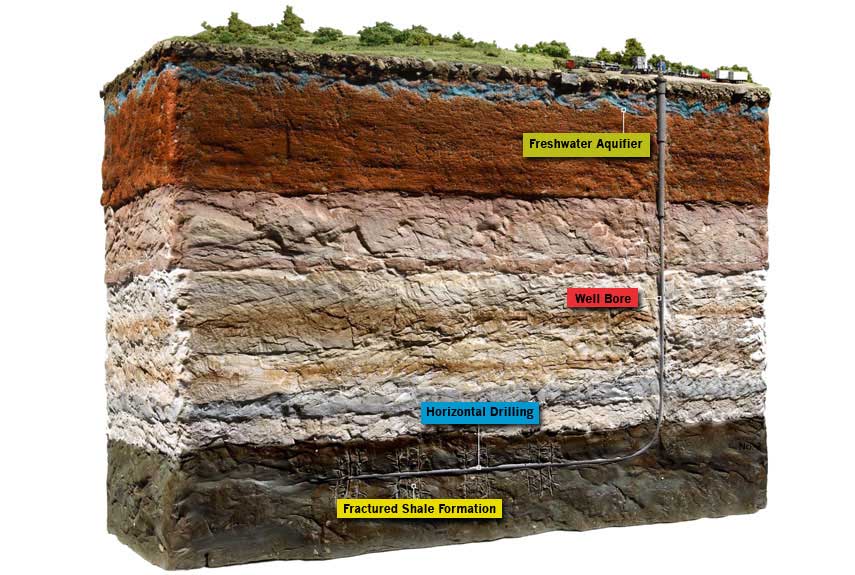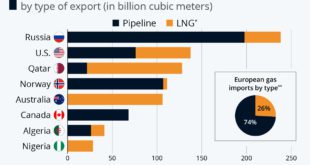Fracking has had profound effects on the energy industry, so far mostly in the U.S., where it has created oil and gas booms in non-traditional places, moved the country closer to energy independence, and resulted in a huge reduction in the cost of energy, particularly natural gas. What is fracking? It’s a technique used to extract oil and gas from previously inaccessible underground shale (rock) formations. Here are 5 more things about fracking.
gas booms in non-traditional places, moved the country closer to energy independence, and resulted in a huge reduction in the cost of energy, particularly natural gas. What is fracking? It’s a technique used to extract oil and gas from previously inaccessible underground shale (rock) formations. Here are 5 more things about fracking.
The above comments are edited excerpts from an article* by Martin Tillier (OilPrice.com) entitled 5 Things You Probably Don’t Know About Fracking.
The following article is presented courtesy of Lorimer Wilson, editor of www.munKNEE.com (Your Key to Making Money!) and www.FinancialArticleSummariesToday.com (A site for sore eyes and inquisitive minds) and has been edited, abridged and/or reformatted (some sub-titles and bold/italics emphases) for the sake of clarity and brevity to ensure a fast and easy read. This paragraph must be included in any article re-posting to avoid copyright infringement.
Click on Facebook for latest articles on gold/silver & economic/financial matters from munKNEE.com
Click on Twitter for latest tweets from munKNEE.com
Click here to subscribe to the FREE Market Intelligence Report newsletter (sample here)
Tillier goes on to say in further edited excerpts:
[In spite of its profound effects on the energy industry], however, fracking is not without controversy. Environmental groups worry that we don’t know the possible effects of chemicals used in the process, and that contamination of the water supply could cause major environmental problems at some point in the future. Breaking up subterranean rock formations just sounds like a harmful thing to do and many believe that earthquakes have been or will be caused.I have no interest in taking sides in the debate, but any debate benefits from knowledge, so here are 5 things that you may not know about fracking.
1. It isn’t new
Hydraulic fracturing (fracking) has risen to prominence over the last five or six years, but the technique itself has been around a lot longer. The first hydraulic fracturing experiment was conducted in Kansas in 1947. It was not successful, but a patent on the process was granted in 1949 and the licensed user of the technique, Halliburton Oil Well Cementing Company, began commercial operations later that year. Since then about 90 percent of U.S. wells have been fracked.
2. It mainly uses sand and water
Environmental concerns about fracking center on the possibility of contamination by chemicals used in the process. This leads many people to believe that it is just a chemical cocktail that is being pumped into the ground. In fact, over 99% of what is pumped typically consists of sand and water. That doesn’t mean that contamination and environmental damage isn’t possible, but it may not be what you envisage.
3. It makes your ice cream more expensive
One component of the small percentage of fracking fluid that is not sand or water is guar gum. This natural product of the seeds of the guar plant is also used to improve the texture of ice cream. A chart of guar gum prices since 2000 looks like this:

Ice cream and other foods that utilize the product have seen significant increases in cost. For those of us with a sweet tooth, this alone may be reason enough to be wary of any more rapid expansion of fracking.
4. The biggest environmental threat could be from the amount of water used, not chemical contamination.
If the benign nature of guar gum and the small percentage of chemicals used in fracking fluid has you believing that the environmental concerns have been massively exaggerated, think again. Fracking just one well uses somewhere in the region of 3 to 8 million gallons of water. Using 2011 data, according to an article by Jesse Jenkins, the amount of freshwater consumed by all the shale wells in the U.S. was about 0.3 percent of total U.S. freshwater consumption. That doesn’t sound like a lot, but in a world where water scarcity is becoming more of an issue it has to be considered as fracking use spreads.
5. It has uses beyond oil and gas.
Hydraulic fracturing of rock formations is not just used to extract oil and gas. It is also used to:
- stimulate production from water wells,
- enhance geothermal production of electricity and, most surprisingly of all, used by the EPA to
- clean up superfund sites.
Conclusion
Proponents and opponents of fracking will no doubt cherry pick from these lesser-known facts about the process to support their arguments. As I said, I have no interest in taking sides here.
I hope that everybody who reads this will learn something that they didn’t know before. The debate will continue to rage, but the more informed that debate is, the better for all of us.
Editor’s Note: The author’s views and conclusions in the above article are unaltered and no personal comments have been included to maintain the integrity of the original post. Furthermore, the views, conclusions and any recommendations offered in this article are not to be construed as an endorsement of such by the editor.
* http://oilprice.com/Energy/Energy-General/5-Things-You-Probably-Dont-Know-About-Fracking.html (© 2014 OilPrice.com. Benefit From the latest energy trends and investment opportunities before the mainstream media and investing public are aware they even exist. The Free Oilprice.com Energy Intelligence Report gives you this and much more. Click here to find out more.)
Related Articles:
1. U.S. Energy Independence Is A Pipe Dream!
I don’t want to kill the dream of U.S. energy independence but the fact is it won’t become a reality overnight. It’s entirely possible, however, that the North American continent [Canada, the U.S. and Mexico] can achieve energy independence within the next decade. [Let me explain.] Read More »
2. Shale Gas Info: What is Shale? What is Fracking? What Does Its Future Mean For America?
Natural gas has the potential to bridge the gap between the current oil dominated energy mix and sustainable renewables. It’s cheap, abundant, and the cleanest fossil fuel in the world. In fact, at today’s consumption rates, estimated US natural gas resources could be used to supply domestic electricity generation for 52 years.That being said, shale gas is trapped thousands of feet underground. How do we extract it and what does the process look like? The infographic below has all the details. Read More »
3. Fracking: Everything You’ve Always Wanted to Know but Were Embarrassed to Ask
Marathon Oil has a great animation on the basics of hydraulic fracturing or “fracking.” It explains how horizontal drilling works and explains the roles of water and sand. Take a look. Read More »
 munKNEE.com Your Key to Making Money
munKNEE.com Your Key to Making Money




If Fracking is so wonderful why are others taking a wait and see approach?
http://www.sbs.com.au/news/article/2014/07/05/germany-could-outlaw-fracking-until-2021